One of the most savory, rich, but light and delightful soups ever is traditional Singapore Laksa.
It is incredibly easy to make, takes only 30 minutes to make, and packs a lot of that authentic flavor!
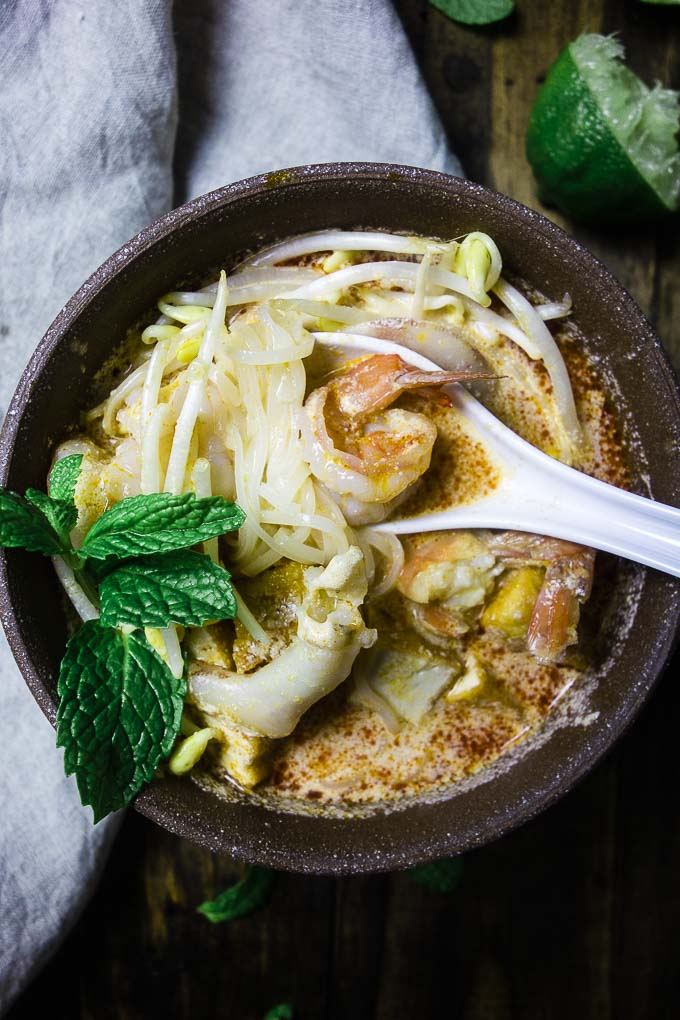
Guys, if you have never had laksa, now is the time. You do not want to miss out on all the amazing flavors in this incredible soup – you also need this prawn laksa in your life.
I had it for the first time in Singapore and just fell head over heels in love. Since then, I have been on the search for restaurants where I can find this delicious soup, only to be sorely disappointing by it’s lack of availability here in San Diego.
I seem to have the same problem with this Bak Kut Teh (Pork Ribs Soup) and chicken rendang, which is why I started making my own!
So I’m just making it myself because I can’t get the flavors out of my head. Singapore laksa is my favorite thing in the world. Not kidding at all.
Spicy, tangy, creamy and just all the flavors that make you feel so good inside.
The flavors in this are not all that different than this Coconut Curry Ramen, which is SO GOOD. You’ll also probably love this Beef Rendang or even this Brazilian Fish stew. They’ll all spicy, tangy, creamy…all the good stuff!
Check out this Singapore Laksa story!
WHAT IS LAKSA?
Singapore laksa is a soup made with bite sized rice noodles, seafood (commonly shrimp and cockles, or clams), a creamy curry and coconut milk based broth with plenty of seasonings and spices. The spices often include lemongrass, palm sugar, spicy chilies, tamarind and lime, among others.
IS LAKSA SPICY?
Yes, laksa is typically spicy. This recipe tones down the spice a little, and for even less spice you can reduce or eliminate the Thai chilies.
WHY THIS RECIPE WORKS
– The coconut milk combined with the tangy flavors of the laksa paste the spice of the chilies complement each other perfectly.
– Cutting the rice noodles into bite sized pieces makes the soup easy to eat with a spoon.
– The seafood and fresh herbs adds an amazing freshness to the soup. Poaching the seafood keeps it deliciously succulent. This Korean Stew also uses poached seafood.
– The spice level can be adjusted to individual preference.
– Just a touch of palm sugar adds the perfect balance of sweet, spicy and tangy.
THE INGREDIENTS
Some of the below contain affiliate links – I earn a small commission if you buy through these links.
Don’t be intimidated by the list of ingredients, this recipe is not hard to make at all, and all the ingredients can be found at your local Asian market, or online.
One of the main ingredients in Singapore Laksa is the laksa paste. For this recipe, I’ve used store bought laksa paste because it has a great flavor and is much easier than making your own (buy laksa paste).
However, if you do want to make your own, check out this recipe for Laksa Paste Recipe from Donna Hay.
Palm sugar is also used in this recipe. You may be tempted to just substitute regular white sugar, but DON’T! Palm sugar has a deeper, more caramel flavor to it, and adds the perfect level of sweetness to complement the other intense flavors of this dish. Buy palm sugar.
I always recommend using full fat coconut milk in this Singapore Laksa recipe. The lite coconut milk will not provide the richness and substance we want in the broth. Buy coconut milk.
I use shrimp and clams in this recipe, but you can substitute any kind of seafood or chicken. Buy clams online.
The fried tofu can be found in the “health” food section of your grocery store. You can also find it in the Asian grocery. If you can’t find fried tofu, you can substitute regular tofu or just leave it out.
We also use spicy Thai chilies for some heat, lemongrass, fish sauce, and kefir lime leaves (to add an extra citrus zing).
The full list of ingredients can be found in the recipe card at the bottom of the post.
WHAT KIND OF NOODLES ARE USED IN LAKSA?
Laksa traditionally uses thinner rice noodles cut in 2-3″ pieces so they can be scooped up with a soup spoon. Laksa is one of the few Asian style soups where chopsticks are not usually used. Buy rice noodles.
STEP BY STEP INSTRUCTIONS
Heat the coconut oil in a dutch oven over medium heat. Add the laksa paste and Thai chilies and stir fry 1-2 minutes, until it becomes fragrant. Be careful not to burn.
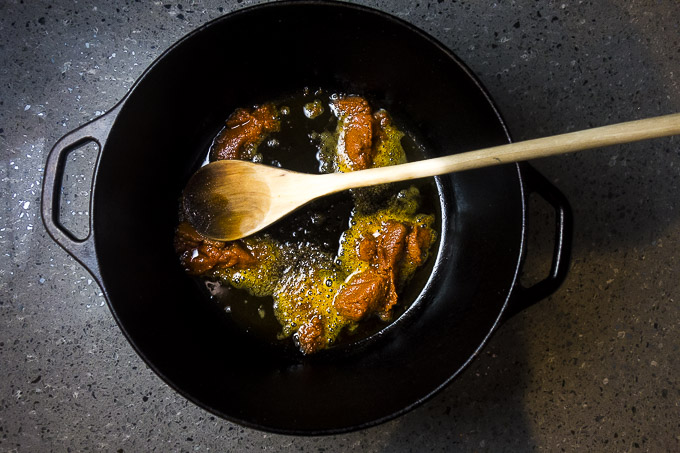
Add the palm sugar, kaffir lime leaves and seafood stock and bring to a simmer.
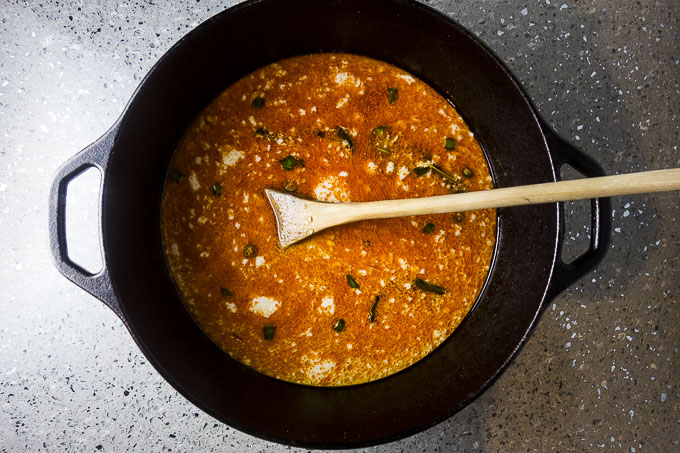
Then add the lemongrass, lime juice, fish sauce and coconut milk. Bring to a simmer and cook for 10 minutes at a simmer.
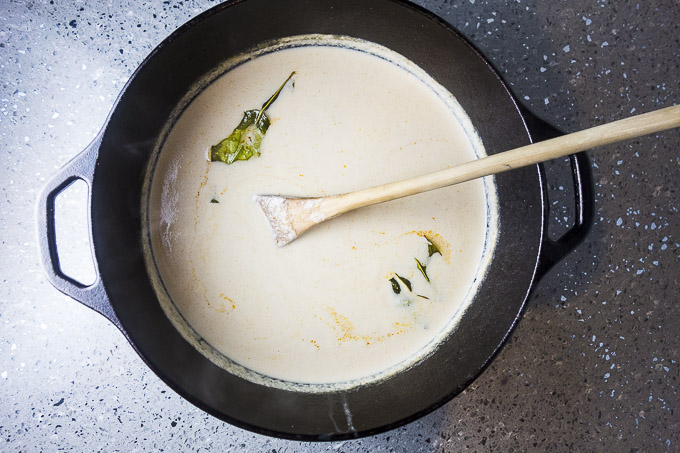
Remove from heat and add seafood. Cover and let sit for 15-20 minutes, until seafood is cooked through.
While the seafood is poaching, use a pair of scissors or a knife to cut the rice noodles into 2-3″ pieces. Add cooked rice noodles and tofu to a bowl.
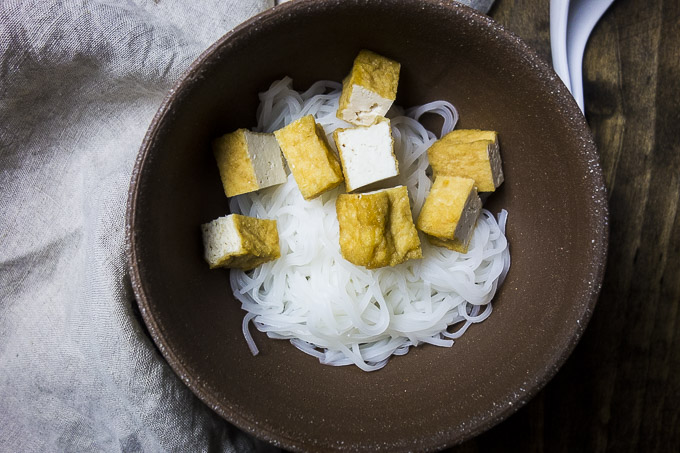
Ladle the soup into the bowls and garnish with bean sprouts, limes, fresh mint and fried shallots.
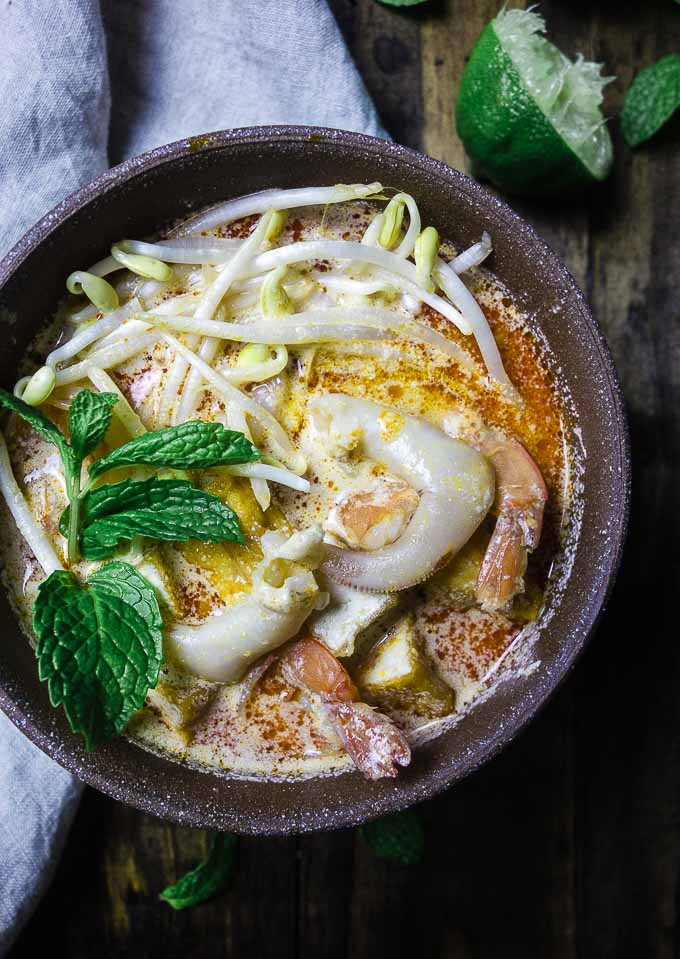
EXPERT TIPS
– You can make your own laksa paste, or use store bought laksa paste for convenience (buy laksa paste).
– If you don’t have palm sugar, you can substitute coconut or brown sugar.
– Always use full fat coconut milk – I do not recommend using lite coconut milk as the consistency will not some out the same.
– Any kind of seafood or chicken can be used in this recipe. If you use fish, I recommend using a firm white fish. If you substitute chicken, it will need to be browned and cooked fully before adding to the soup.
– If you can’t find fried tofu, you can substitute regular tofu or just leave it out.
– The cooked rice noodles should be cut in 2-3″ pieces so they can be scooped into a soup spoon as is done in traditional laksa.
HOW LONG DOES LAKSA LAST IN THE FRIDGE?
Leftover laksa will last up to 3 days in a covered container in the fridge. The laksa broth can be made ahead of time and stored in the fridge for up to 3 days until ready to use.
To use, bring to a boil on the stove-top, remove from heat and add the seafood. Cover and let sit for 15-20 minutes, or until seafood is cooked through. Serve according to recipe instructions.
CAN YOU FREEZE LAKSA?
You can make the laksa broth ahead of time and freeze it in a airtight container. It can be stored in the freezer for up to 3 months.
Thaw in the fridge overnight and reheat on the stove in a saucepan boiling. Remove from heat and add seafood, cover and let sit 15-20 minutes, or until seafood is cooked through. Serve according to recipe instructions.
TOOLS USED
– Dutch oven– Kitchen shears– Soup ladle
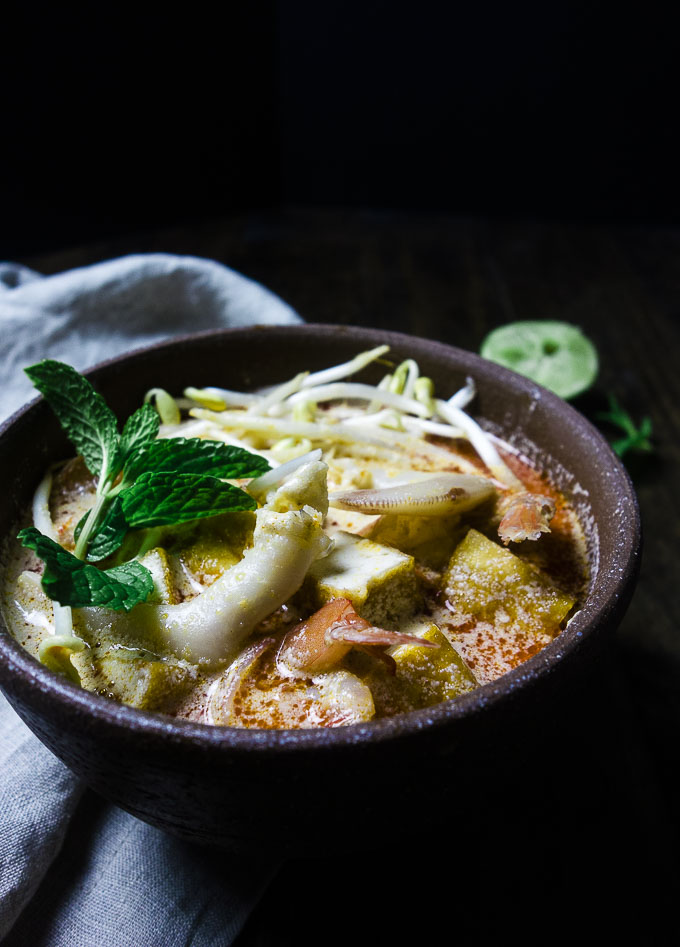
Source: https://www.wenthere8this.com








